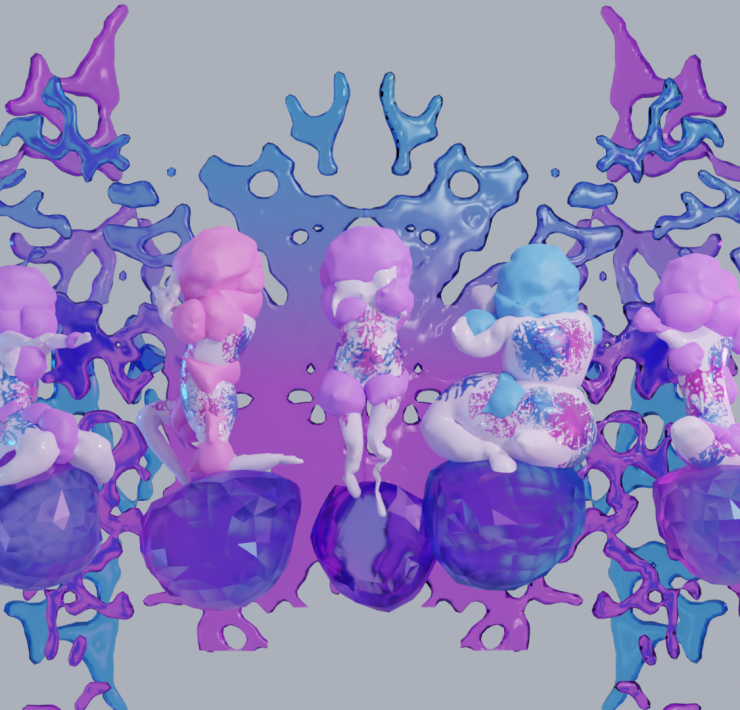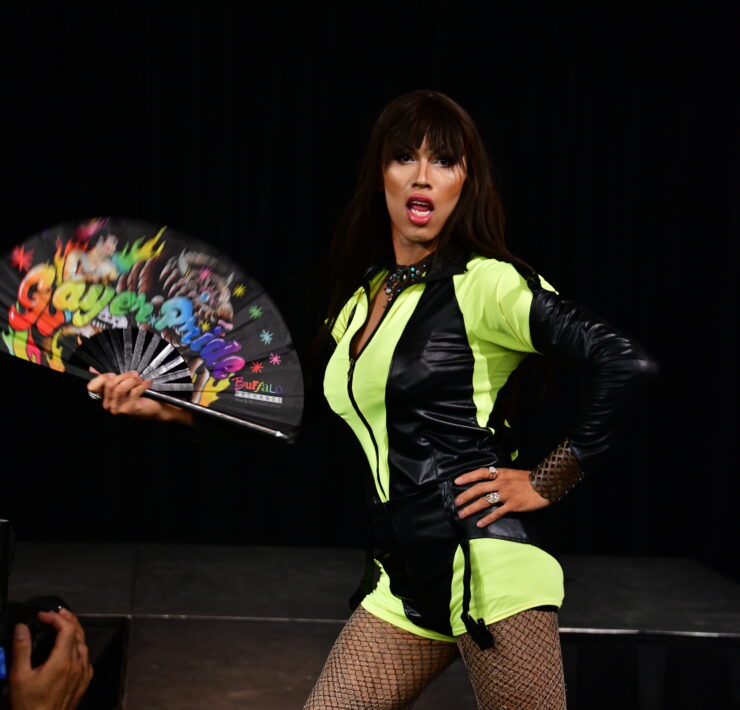Jeffrey Gibson’s ‘Like A Hammer’ Showcases the Colorado Artist’s Life

From now through August 12, visitors at the Denver Art Museum will be able to see the work of Colorado Springs native Jeffrey Gibson. The first major museum exhibition of the artist’s work, “Like A Hammer,” chronicles a pivotal moment in Gibson’s career when his contemporary artistic practice converged with his Native American heritage.
The exhibition features 57 objects from 2011 to the present, including wall hangings, beaded punching bags and painted works on rawhide and canvas. Gibson draws upon his heritage and remixes his older works to create a visual masterpiece that explores his multifaceted identity and the history of modernism.
Museum attendees will look at Gibson’s pieces and see universal themes including love, community, strength, vulnerability, and survival. Once its time at the Denver Art Museum is finished, “Like A Hammer” will then travel to the Mississippi Museum of Art from September 8 to January 20.
OUT FRONT had the pleasure of chatting more with Gibson about his exhibition and his passion for art.

Let’s start off with your ‘Like A Hammer’ exhibition. Tell me more about it.
‘Like A Hammer’ has been in the works for about four years, and it is focused on a specific period of my work from 2011 to 2018. There was a big shift in my work in 2011 and these bodies of work show the development of my work during those years. Previously, I was primarily a painter working in oil paint on canvas then began using materials more recognizable as having specific Native American references. This is the subject I was always interested in, but I decided to stop referencing the materials and some of the processes and just be more direct. The exhibition also features some of the first works that incorporate text into the beading, a video work, paintings, figures, and a large selection of adorned punching bags.
How does it feel to have this exhibition displayed in the Denver Art Museum?
It feels great and I think The Denver Art Museum is the right place for this exhibition to originate. Walking through the galleries is like revisiting nearly a decade of my life and seeing that there has always been a consistent and developing thread in my work and life.
So, this is your first major museum exhibition?
Of this scale, yes.
How did ‘Like A Hammer’ begin? What was the starting moment?
I originally contacted the Museum to come and research another exhibition in 2010 and met the curator, John Lukavic, soon after. He later asked me to be an artist in residence in 2014 and that is when the video one and the other was made. After that, John asked me if I would consider having a solo exhibition there at the museum. From that point on, I would visit the museum, and he would come to my studio in the Hudson Valley and talk about my work and ideas. I continued making work thinking about this exhibition and finally the date arrived.
Where did your passion for art come from?
I have always drawn and then began painting as a teenager. My family moved around a lot when I was a child. We lived in Germany, Korea, the U.S.; then I went to England for graduate school, and then to NYC. Art-making has been something I could do everywhere I went. I think it grounded me and allowed me to create my own visual language to document the places I would visit and the things I would see and experience. It’s never been a question for me that I would be an artist.
I read that ‘Like A Hammer’ was a pivotal moment in your career. How so?
It marks a big shift in my work from painting to an interdisciplinary practice, and from oil paint and canvas to hide, beads, craft, and textiles. This shift was cathartic for me and allowed me to develop my artistic voice so that people could understand what I was trying to talk about, which was Native American material histories.
What do you hope people take away from your art?
I hope people realize that the things that make us feel vulnerable can also become our greatest strengths.

How does ‘Like A Hammer’ comment on current social and political issues?
There is a lot of fear and anxiety in the world and in contemporary society, and acting out of fear only creates more and more walls between us—emotionally, physically, and politically. Ultimately, these walls serve to tear us apart and weaken us all as individuals and our communities. It is more difficult to thoughtfully challenge boundaries and stereotypes, but the reward is a more stable and sustainable society. A lot of the materials and processes that I use in my work are not able to be mass produced and resist commodification. These are one kind of strategy to resist a flattening of society and losing the strengths of unique individuals.
How would you say your art is unique and stands out from the million other artists in the world?
I am not overly concerned with being unique or standing out. I am interested in committing to my practice and continuing to experiment to see where it all leads. I hope my work can start or take part in progressive conversations about what we can all do to build a better society and stop trying to compete or one-up each other.
Is there a piece from this exhibit that you hold closest to your heart?
I would say the very first punching bag titled ‘Everlast.’ When I made it, I had a vision of it and was not sure what it would become. I did not plan to make more of the bags, but it was one of my first works that really communicated the layered story I was trying to tell. Viewers got it and related to my own experiences of failure and overcoming something.
What current art trends are you following?
I honestly do not look too much at a lot of artwork. I am reading a lot of writing by contemporary critical thinkers and researching 20th century histories of Native American artists and designers.
Who are some of your biggest influences?
This list might sound random, but it’s honest and in no particular order: Prince, Grace Jones, Nina Simone, James Baldwin, Raymond Carver, Audre Lorde, Jimmy Sommerville, Oscar Howe, The Kiowa Six, Rammellzee, Jean Michel-Basquiat, Rei Kawakubo, Leigh Bowery, Peter Beard, Alexander McQueen, Sam Gilliam, it goes on and on.
What advice do you have for those who wish to pursue art as a career?
Time works differently for an artist, and you don’t need to give in to the pressure of making “fast” art. Much like “fast fashion” it generates trends that don’t stick around very long. Think longterm and focus on what is most important to you. Try to visualize and make what seems impossible. It takes time, but as an artist you must demand time to make something extraordinary. It gets easier over time and less frustrating because you begin to understand the process and the reward of the finished artwork is worth it. Art is impractical. It is not meant to be practical. If you can, give into it.
What's Your Reaction?
Denny Patterson is a St. Louis-based entertainment and lifestyle journalist who serves as OFM's Celebrity Correspondent. Outside of writing, some of his interests include traveling, binge watching TV shows and movies, reading (books and people!), and spending time with his husband and pets. Denny is also the Senior Lifestyle Writer for South Florida's OutClique Magazine and a contributing writer for Instinct Magazine. Connect with him on Instagram: @dennyp777.










